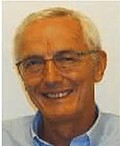This is the first in a series of calls about the issues of precautionary action, coping with multicausal hazards and taking public health decisions under conditions of uncertainty.
Much of the discussion in Europe about when to regulate hazardous chemicals turns around the issues of when to take precautionary action, before there is enough certainty about forthcoming harms to qualify as preventive action. Now the European Environmental Agency has released the second volume of the esteemed Late Lessons from Early Warnings publication, it is timely to look back and (re)discover the first volume, many of whose cases continue to be valid today. David Gee, from the European Environment Agency, a leading expert on the precautionary principle, and initiator and co-author of both volumes, discussed the first volume Late Lessons from Early Warnings: the precautionary principle 1896-2000 with Michael Lerner. The call started by looking at how to learn from historical cases of environmental and health disasters, and then addressed some of the case studies on hazardous chemicals (benzene, asbestos, PCBs, DES), finishing with the distilled twelve late lessons from the case studies.
Featured speaker:
 David Gee has been working at the interface of science, economics, production and policy making within occupational and environmental health since 1974. He has worked for trade unions and NGOs—being a past director of Friends of the Earth UK—and as a consultant. Since December 1995, he has worked for the European Environment Agency (EEA, Copenhagen), on science, policy and emerging issues. Among many other projects, David has been the catalyst, EEA editor and a chapter co-author for the two volumes of Late Lessons Early Warnings published by the EEA in 2001 and 2013. David is also a founding Fellow of Collegium Ramazzini, an independent, international academy whose mission is to advance the study of occupational and environmental health issues, assess present and future risks of injury and disease attributable to the workplace and the environment, especially preventable risk factors, and transmit its views on these hazards and their prevention to policy-making bodies, authorities, agencies and the public.
David Gee has been working at the interface of science, economics, production and policy making within occupational and environmental health since 1974. He has worked for trade unions and NGOs—being a past director of Friends of the Earth UK—and as a consultant. Since December 1995, he has worked for the European Environment Agency (EEA, Copenhagen), on science, policy and emerging issues. Among many other projects, David has been the catalyst, EEA editor and a chapter co-author for the two volumes of Late Lessons Early Warnings published by the EEA in 2001 and 2013. David is also a founding Fellow of Collegium Ramazzini, an independent, international academy whose mission is to advance the study of occupational and environmental health issues, assess present and future risks of injury and disease attributable to the workplace and the environment, especially preventable risk factors, and transmit its views on these hazards and their prevention to policy-making bodies, authorities, agencies and the public.
Respondent
 Lisette van Vliet, PhD, is the senior policy advisor on chemicals and chronic disease prevention for the Health and Environment Alliance (HEAL) in Brussels, the seat of the European Union. She holds a doctorate in international relations and environmental studies from the Australian National University in Canberra. In 2005, Dr. van Vliet joined the International Chemical Secretariat, Health Care Without Harm Europe, and the Health and Environment Alliance as toxics policy advisor, working on REACH and other EU laws and policies on harmful chemicals such as phthalates, mercury and endocrine disruptors. For HEAL, she represents the expertise of HEAL members and partners on these topics to the EU institutions, sitting on a number of EU expert, research and stakeholder groups including the European Chemicals Agency Member State Committee, the EU EDC Ad Hoc Group, and the EU Human Biomonitoring project COPHES. Dr. van Vliet also conducts outreach to various groups on the links between environmental contamination and chronic diseases, such as cancer and reproductive health problems, and their prevention through environmental policy measures.
Lisette van Vliet, PhD, is the senior policy advisor on chemicals and chronic disease prevention for the Health and Environment Alliance (HEAL) in Brussels, the seat of the European Union. She holds a doctorate in international relations and environmental studies from the Australian National University in Canberra. In 2005, Dr. van Vliet joined the International Chemical Secretariat, Health Care Without Harm Europe, and the Health and Environment Alliance as toxics policy advisor, working on REACH and other EU laws and policies on harmful chemicals such as phthalates, mercury and endocrine disruptors. For HEAL, she represents the expertise of HEAL members and partners on these topics to the EU institutions, sitting on a number of EU expert, research and stakeholder groups including the European Chemicals Agency Member State Committee, the EU EDC Ad Hoc Group, and the EU Human Biomonitoring project COPHES. Dr. van Vliet also conducts outreach to various groups on the links between environmental contamination and chronic diseases, such as cancer and reproductive health problems, and their prevention through environmental policy measures.
The call was moderated by Michael Lerner, president of Commonweal.
